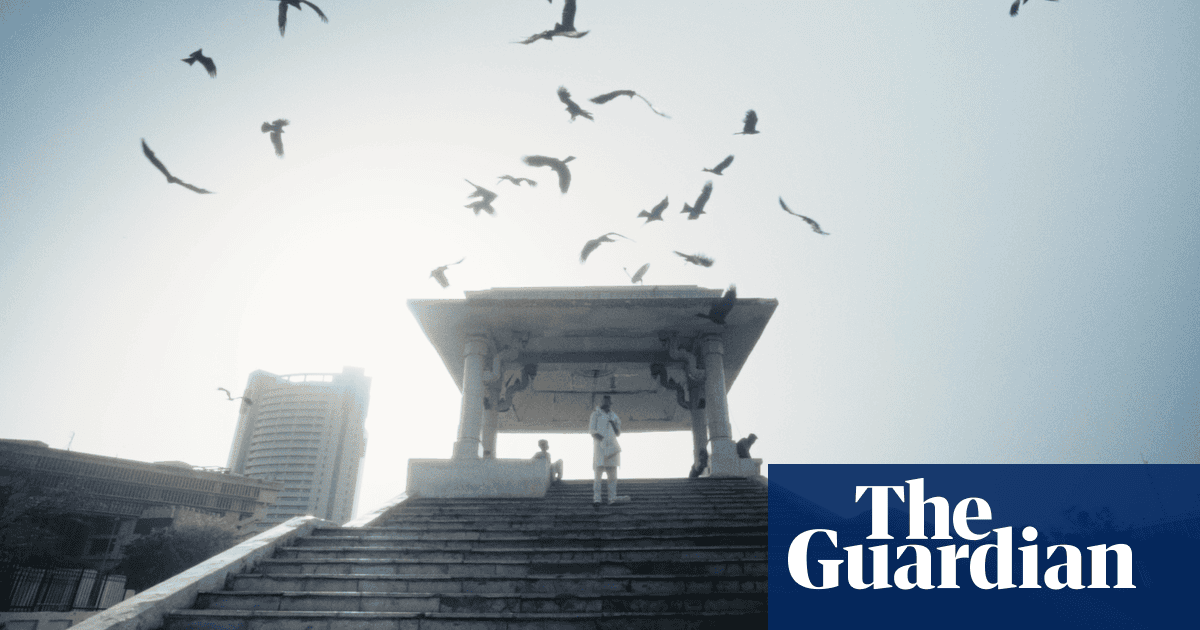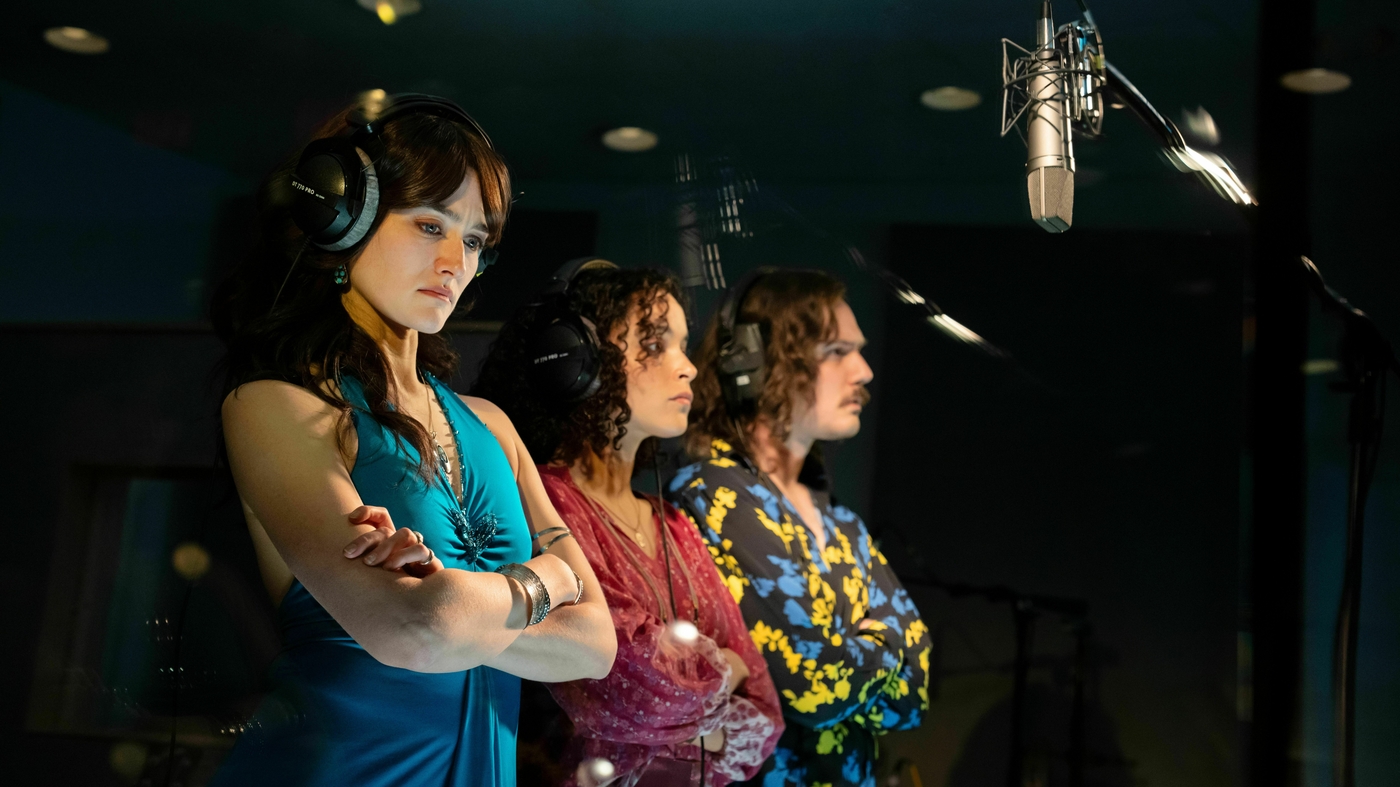
‘A gaping wound’: how a film about birds of prey is a warning to India’s capital city
The award-winning documentary All That Breathes is a meditation on life in Delhi through the eyes and hands of two brothers that nurse injured birds back to health. After winning the world cinema grand jury prize at the Sundance film festival this year it is screening at Cannes, and in many ways it is easier to say what it is not than to define what it is. It is not a wildlife documentary, nor a table thumping call to action; it is not a family drama nor a political film – and yet it contains elements of all these, woven into a poetic and beautiful tapestry. The events depicted are less important than the overall feeling.
Much of that is to do with the Indian capital’s role in the film: a scruffy, belligerent character, integral to the story. “Anyone who lives in Delhi knows that you are constantly surrounded by this grey sensorium,” says the film’s director, Shaunak Sen. “This fabric of greyness, this mood, this tone, where the sky and the clouds and the buildings just sort of mesh into each other has fascinated me for some time. The sun is this diffuse blot and the air that you’re breathing in, the whole ecological bubble you are in, feels hostile to your sense of sustenance.
“And the feeling that the air-conditioning system of Spaceship Earth is going awry is very strong in the city. So the starting point wasn’t so much a story as a texture.”
Sen has made his home town central to his work before: his 2015 first feature, Cities of Sleep, examined the nature of insomnia as told through the city’s informal shelters and the underclass that often need somewhere safe and warm to spend winter nights. This time he became inspired while being regularly stuck in Delhi’s perennial traffic, and looking up from his car. “I’d see these tiny, lazy black dots gliding around. These were black kites, and it’s one of those things where once you start thinking about them you can’t stop noticing them.”
The first experts Sen spoke to were brothers Nadeem Shehzad and Mohammad Saud: and the director knew he had his subjects. They narrate the film with spoken thoughts. They have loved birds since they were infants and have been treating black kites for nearly 20 years via the organisation they founded, Wildlife Rescue.
While both are passionate about the birds, fitting in animal hospital duties amid their daily toil takes its toll. Saud seems happy to keep doing what he’s doing, but Nadeem yearns to see the world beyond their district of Wazirabad and wants to pursue studies in America.
“One shouldn’t differentiate between all that breathes,” says Saud, in one of many ruminations, and the very idea of breathing is fundamental to every theme the film touches on. Delhi’s chronic air pollution problem wraps itself around so many aspects of their lives. Saud’s young son has a worrying cough, people were wearing face masks in the city way before Covid hit, and the family’s air purifier seems permanently stuck on red because the filters need changing.
The brothers’ problems keep mounting: the meat grinder for the kites’ chum is on the fritz (as is their freezer), the city is becoming engulfed in sectarian protests over a pisive citizenship law, seen as targeting Muslims like them and they must still contend with all the other travails a working family has to on a daily basis. All the while the kites keep dropping from the sky. “Delhi is a gaping wound and we’re a tiny Band-Aid on it,” says Nadeem.
Let’s face it, [Cannes] is the place, in terms of status and recognition
Sen says it was both the stoic work ethic mixed with their insightful nature that made them ideal subjects for the project. “They were not typical documentary subjects as they were also interlocutors in terms of form and narrative, and they understood how we were trying to balance this noble act of bird rescue with the quotidian existence they lead. It was far more collaborative than traditional documentary dictums suggest.”
If this all sounds like too much chin-scratching, pensive stuff, the film also has touching and amusing moments, sometimes veering into farcical. The bird treatment is mainly done in a hot, claustrophobic basement that instantly excited Sen. “As soon as I saw that garage, I knew it had to be central to the documentary,” he says. “This dingy, cinematic basement that makes soap dispensers, filled with all kinds of junk and metal-cutting machinery and industrial decay; then you have these magisterial birds being tenderly cared for by these guys. It’s fascinating.”
And in the brothers’ young helper, Salik, they find a perfect counter-energy and an endearing scene stealer. Everyone knows someone like Salik – a little brother, a cousin, a nephew, a colleague, a pal – asking innocent and baffling questions about nuclear war and American wrestling at inopportune moments.
At one point a bird swoops in and steals Salik’s glasses but all he does is smile. But then later he genuinely ponders, “why the glasses?” In one beautiful scene where he’s riding in the back of a tempo (a three-wheeled goods truck) he suddenly reveals he has a baby chipmunk in his shirt pocket, like an adorable desi Newt Scamander from the Ministry of Magic.
Sen is overjoyed to be going to Cannes, saying: “Let’s face it, this is the place, in terms of status and recognition,” and adds that he is looking forward to the event as much as a cinephile as a director. “The film-maker in me is honoured, and the film buff in me is ecstatic!”
Closeups of the imperious birds – often felled, ironically, by paper kites flown by kids, who glue broken glass on to the strings for aerial battles – is intercut with news and social media footage of Muslim areas being razed by Hindu zealots, including an extremist thug climbing up a mosque and tearing down the Islamic crescent atop one of its ornate minarets. It’s a tale of tragedy slowly befalling man and beast.
Sen very much captures Delhi’’s duality in this paean to his home town, its people and its creatures, in flight and plight.






































































